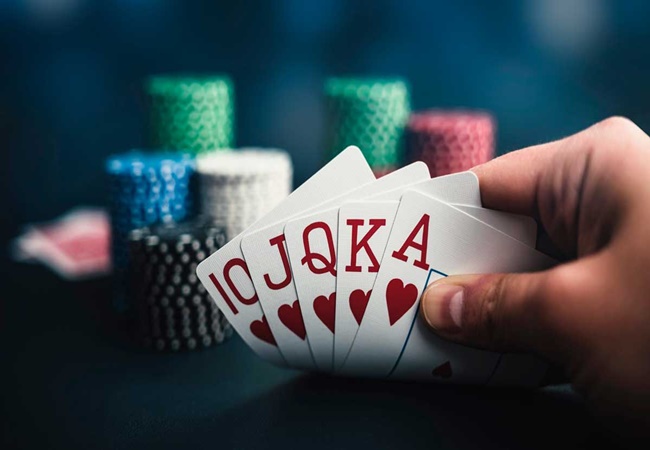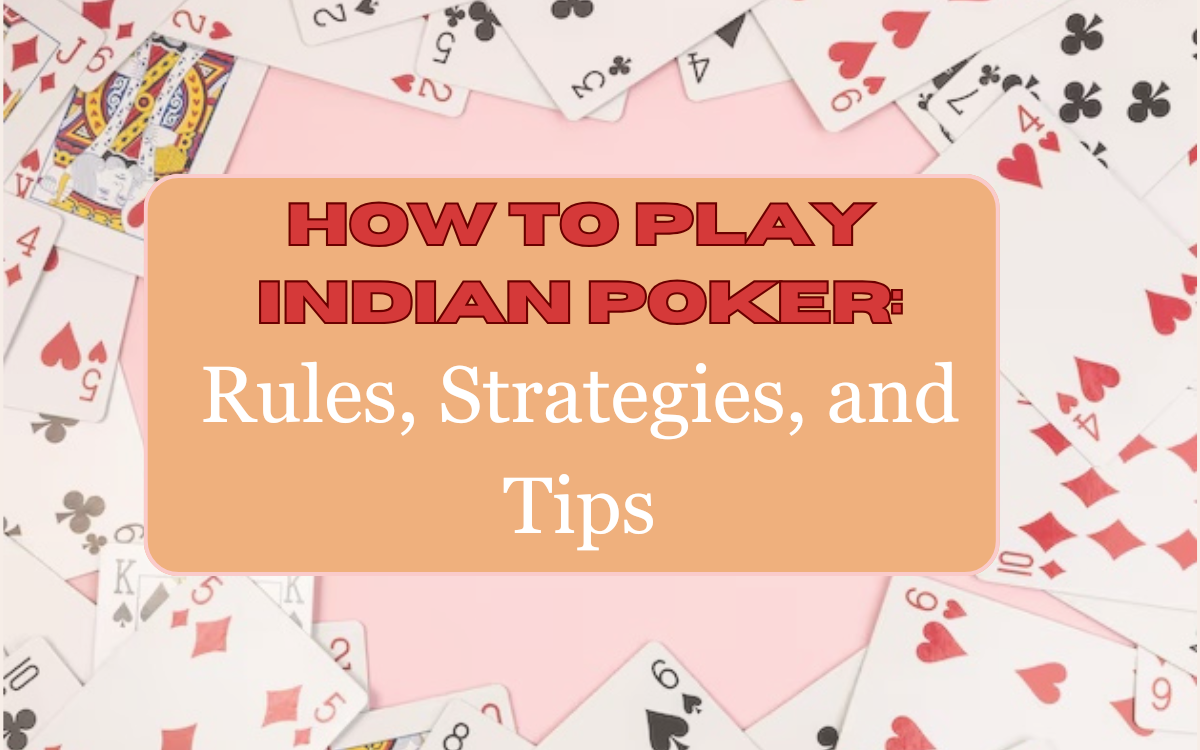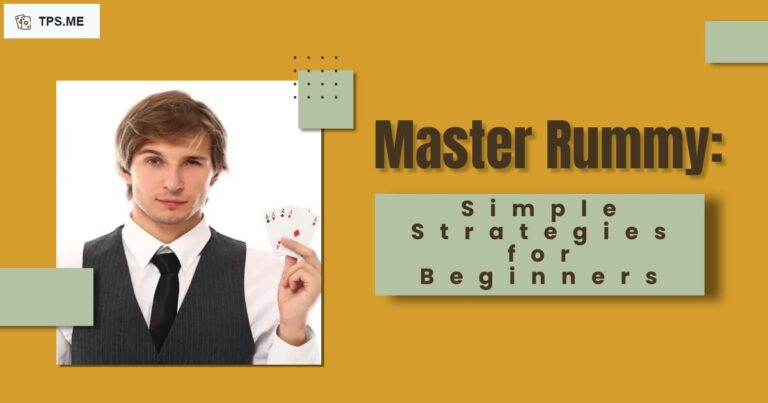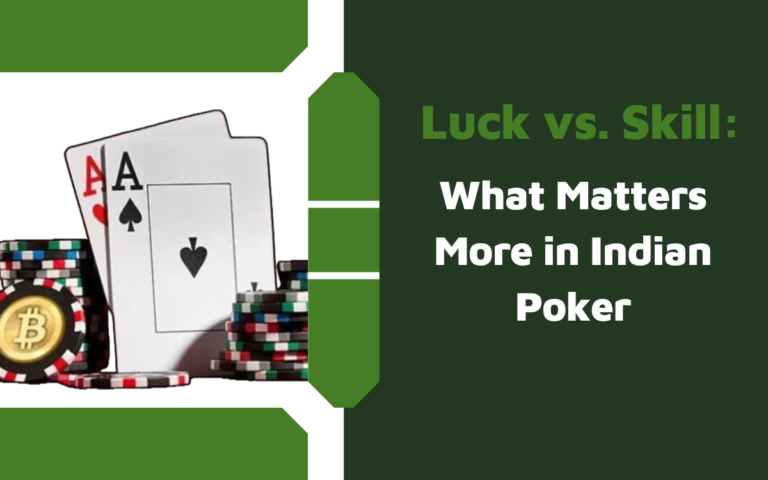How to Play Indian Poker: Rules, Strategies, and Tips
Indian Poker games, also known as “Blind Man’s Bluff,” is a thrilling and unpredictable card game that combines elements of strategy, psychology, and luck. Unlike traditional poker games where players see their own cards, Indian Poker involves each player holding a card to their forehead without looking at it, making for an exciting game of deception and deduction. Whether you’re new to Indian Poker games or looking to refine your skills, this guide will cover the rules, strategies, and expert tips to help you master the game.

Understanding the Basics of Indian Poker
Objective of the Game
The primary goal in Indian Poker games is to have the highest-ranking card among all players or convince others to fold by using bluffing and reading skills. Since players cannot see their own card, they must rely on the facial expressions and actions of their opponents to decide whether to bet or fold.
Number of Players
Indian Poker games is typically played with three or more players, making it a great game for social gatherings and casual play. The more players involved, the more unpredictable and entertaining the game becomes, especially on platforms like Teen Patti Stars.
Card Rankings
The ranking of cards follows the standard poker hierarchy, from highest to lowest:
- Ace (highest)
- King
- Queen
- Jack
- 10, 9, 8, 7, 6, 5, 4, 3, 2 (lowest)
Suits do not typically matter in Indian Poker unless specific house rules dictate otherwise.
Rules of Indian Poker Games
- Dealing the Cards
- Each player receives one card face down.
- Without looking at their card, players place it on their forehead so that all opponents can see it.
- Betting Round
- Players can choose to bet, raise, call, or fold based on their perception of their own card, derived from their opponents’ reactions.
- The betting structure can follow a fixed limit, pot limit, or no limit, similar to traditional poker games.
- Showdown
- After the final betting round, players who have not folded reveal their cards.
- The player with the highest card wins the pot.
- Bluffing and Psychological Play
- Since players cannot see their own cards, they rely on reading body language, facial expressions, and betting patterns to make informed decisions.
- Bluffing plays a crucial role in making opponents doubt the strength of their own hand.
Strategies for Winning at Indian Poker
1. Reading Your Opponents
Observing opponents’ behavior is the key to success in Indian Poker games. Look for signs of confidence, hesitation, or nervousness. If a player seems overly confident, they may have a strong card—or they could be bluffing.
2. Mastering Bluffing Techniques
Bluffing is a fundamental strategy in Indian Poker. Even if you have a weak card, you can trick opponents into folding by betting aggressively and displaying confidence. Conversely, you can pretend to be uncertain to lure opponents into making mistakes.
3. Using Reverse Psychology
Sometimes, acting the opposite of what your card suggests can confuse your opponents. For instance:
- If you have a high card, act unsure to encourage opponents to bet.
- If you have a low card, act confident to make opponents second-guess themselves.
4. Controlling the Betting Rounds
- Small bets early: If you’re unsure about your hand, start with small bets to gather information.
- Aggressive raises: If your opponents hesitate, raising aggressively can push them into folding.
- Strategic folds: Sometimes, folding early can save you chips if you sense that your opponents have strong hands.
5. Observing Betting Patterns
Players tend to develop betting habits. If someone always raises high cards, you can use that knowledge to counter them. Similarly, if a player frequently bluffs, you can call them out when necessary.
6. Managing Your Bankroll
- Set a budget before playing.
- Avoid chasing losses—if you’re on a losing streak, take a break.
- Be cautious when playing against aggressive bettors to avoid unnecessary risks.
Expert Tips for Indian Poker
1. Stay Calm and Composed
Your facial expressions can give away valuable information. Practice keeping a neutral expression no matter what card you think you have.
2. Practice Mind Games
Indian Poker games is as much about psychology as it is about luck. Use mind games to mislead opponents into making wrong decisions.
3. Play with Different Groups
Playing Teen Patti games with different people will expose you to various playing styles, improving your adaptability and strategic thinking.
4. Don’t Rely Solely on Luck
While luck plays a role, Indian Poker games is largely about reading others and making strategic decisions based on available information.
5. Adapt Your Playstyle
- Against aggressive players, be cautious and don’t fall for their traps.
- Against passive players, take control of the game and apply pressure.

Variations of Indian Poker
There are several exciting variations of Indian Poker that introduce new rules and challenges:
1. Classic Indian Poker
Each player gets one card, and the highest-ranked card wins.
2. Two-Card Indian Poker
Players are dealt two cards and must use the higher-ranked card for the showdown.
3. Indian Poker with Jokers
Jokers can be introduced as wild cards, adding an extra layer of unpredictability.
4. Betting-Based Indian Poker Games
In some versions, players can bet multiple rounds instead of a single betting phase, making it more strategic.
Why Indian Poker is Popular
- Easy to Learn: The rules are straightforward, making it accessible to beginners.
- Psychologically Intense: The game is a test of bluffing skills and emotional control.
- Great for Social Gatherings: It’s an entertaining party game that leads to lots of laughter and excitement.
Final Thoughts
Indian Poker games are psychological warfare, strategy, and luck. While having a high card can give you an advantage, it’s ultimately your ability to read opponents and control the betting that determines success. By mastering bluffing, betting strategies, and psychological tactics, you can significantly improve your chances of winning.
Now that you understand how to play Indian Poker, it’s time to gather your friends, deal the cards, and put your skills to the test!







